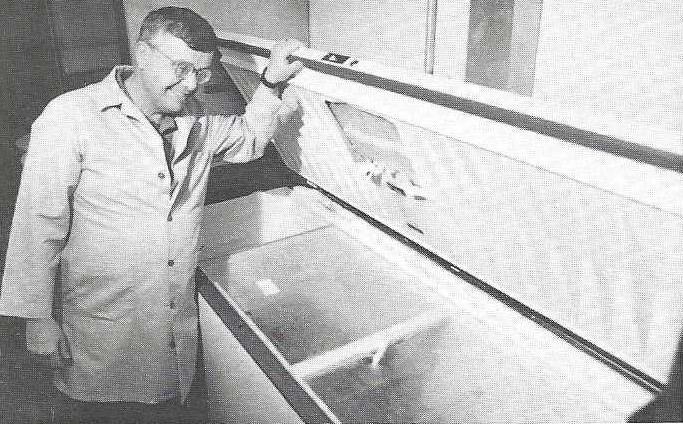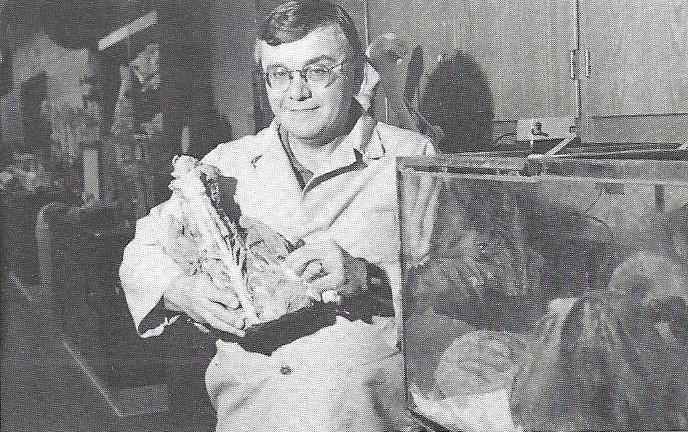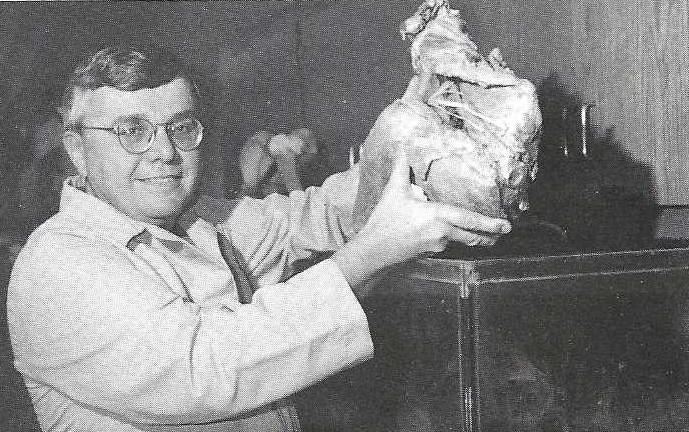College of Veterinary Medicine, The University of Tennessee, Knoxville, TN, USA
Large specimens which are to be plastinated present some special problems. Obviously, containers for fixation, dehydration and impregnation must be of adequate size. Specimen preparation is important and care must be taken to preserve the normal anatomical detail and position. Large hollow organ specimens may be full of ingesta, time consuming, and tedious. Select a less obvious site and make an incision large enough to adequately remove the ingesta. After removal of the ingesta and adequate flushing, suture the incision closed and dilate fix the organ. Removal of the sutures prior to dehydration makes that step easier because the specimen will submerge easier in the dehydrating fluid. Large specimens tend to flatten on the resting surface. Thus allowing the specimen to float in storage or fixative solutions prevents flattened disfiguration. Fixation of hollow organs via dilation helps to assure proper anatomical detail of the final product. Specimen baskets for dehydration and impregnation aid in transferring and draining specimens. A plastination chamber of adequate size is essential. During curing of the large specimens, large volumes of air may be used to inflate hollow organs. Incisions in hollow organs should be sutured closed to allow for inflation with air. Part of the organ may be suspended by a string or tubing to prevent flattened areas on dependent areas of the specimen during the curing process. The specimen should be turned frequently to also prevent flattening of the dependent surfaces of the organ. The organ should be turned daily until the organ has cured throughout its depths.
Silicone; S10: Large Specimens
Robert W. Henry College of Veterinary Medicine, The University of Tennessee, Knoxville, TN, USA
![]()



Large specimens which are to be plastinated present some special problems. Obviously, containers for fixation, dehydration and impregnation must be of adequate size. Specimen preparation is important and care must be taken to preserve the normal anatomical detail and position. Large hollow organ specimens may be full of ingesta, time consuming, and tedious. Select a less obvious site and make an incision large enough to adequately remove the ingesta. After removal of the ingesta and adequate flushing, suture the incision closed and dilate fix the organ. Removal of the sutures prior to dehydration makes that step easier because the specimen will submerge easier in the dehydrating fluid. Large specimens tend to flatten on the resting surface. Thus allowing the specimen to float in storage or fixative solutions prevents flattened disfiguration. Fixation of hollow organs via dilation helps to assure proper anatomical detail of the final product. Specimen baskets for dehydration and impregnation aid in transferring and draining specimens. A plastination chamber of adequate size is essential. During curing of the large specimens, large volumes of air may be used to inflate hollow organs. Incisions in hollow organs should be sutured closed to allow for inflation with air. Part of the organ may be suspended by a string or tubing to prevent flattened areas on dependent areas of the specimen during the curing process. The specimen should be turned frequently to also prevent flattening of the dependent surfaces of the organ. The organ should be turned daily until the organ has cured throughout its depths.
 |
 |
 |
|
None